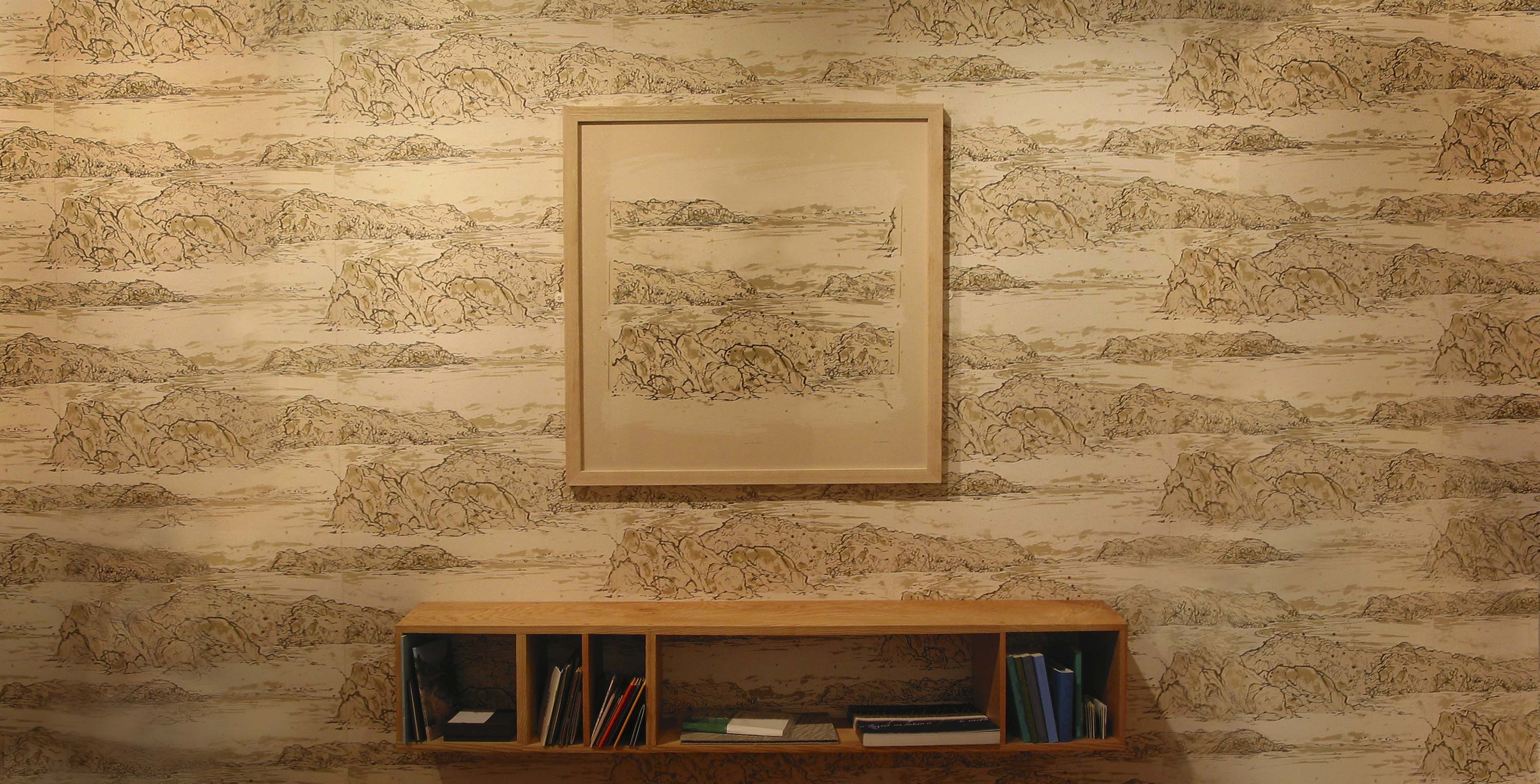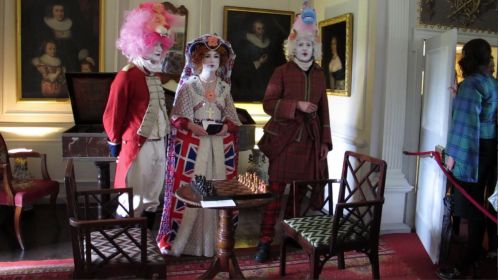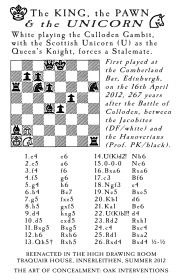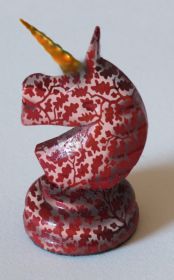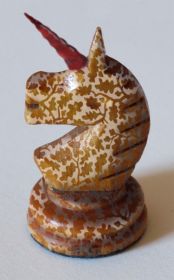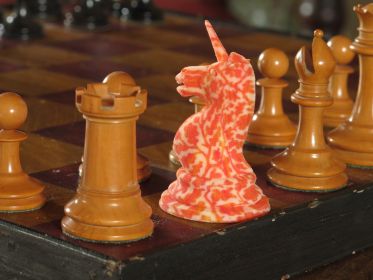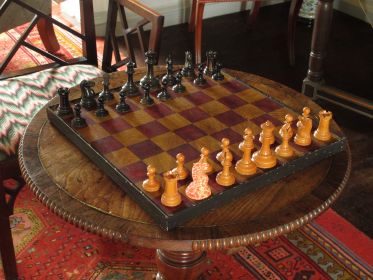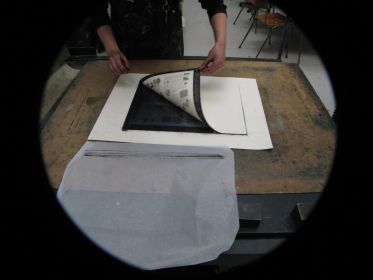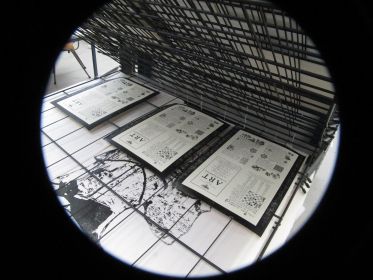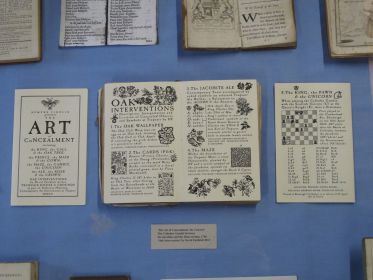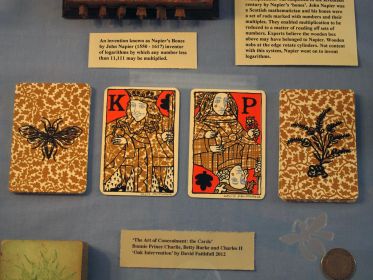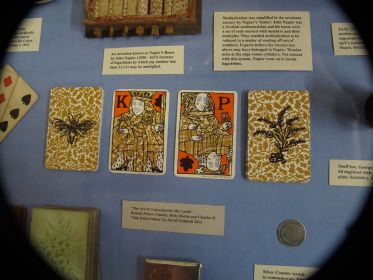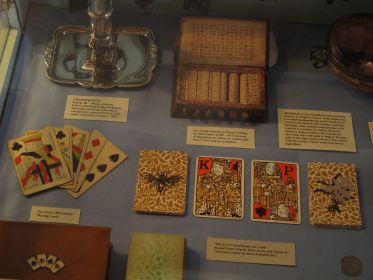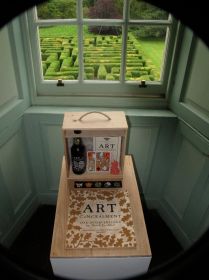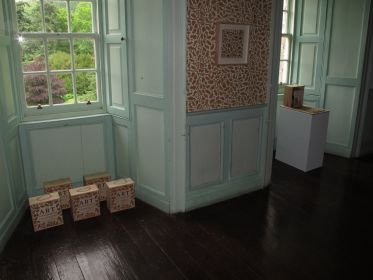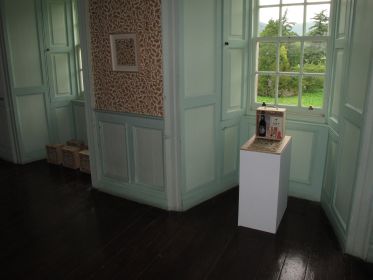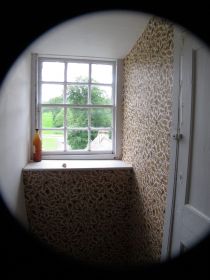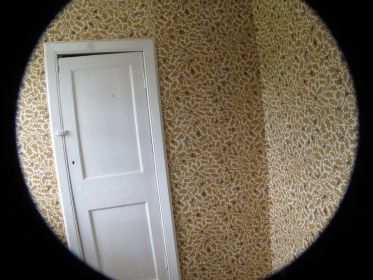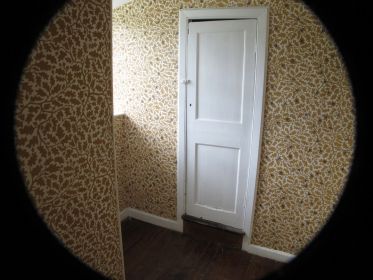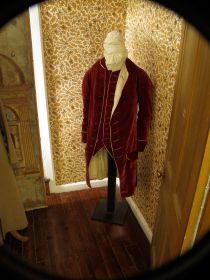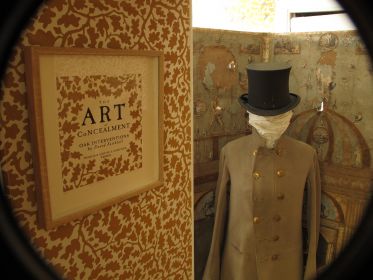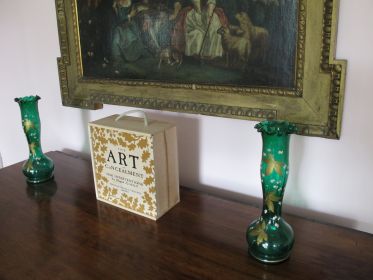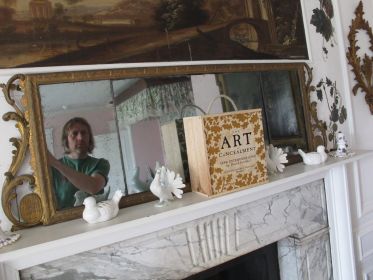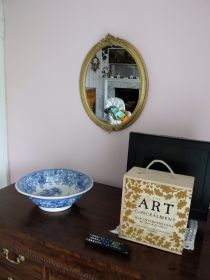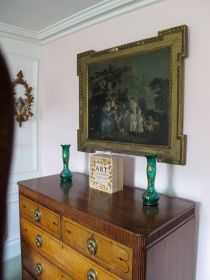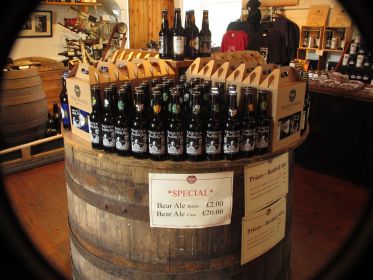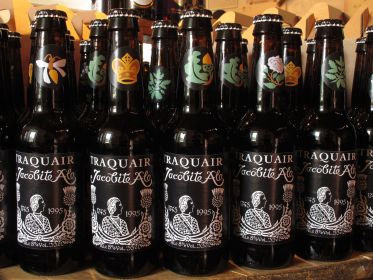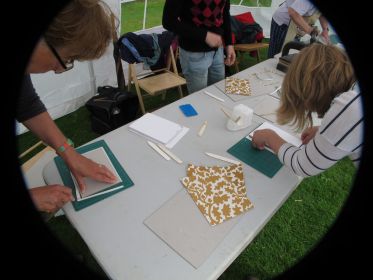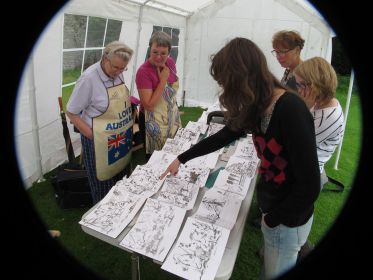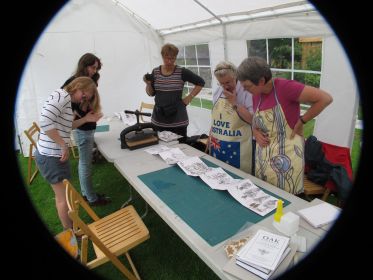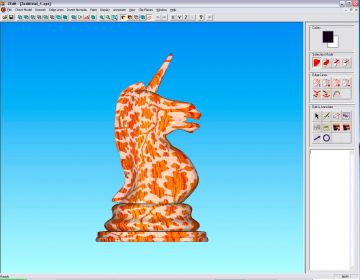Reflective Histories: Contemporary Interventions at Traquair
1 July - 30 September 2012
Scottish Borders historic home, Traquair House near Innerleithen is the inspiration for a groundbreaking contemporary art exhibition opening on July 1st.
Titled “Reflective Histories”, the exhibition features a series of new installations and accompanying print works by seven leading contemporary Scottish artists designed to reflect different aspects of the house’s rich and complex heritage.
The exhibition, which is free with entry to Traquair House, will run until the end of September and is accompanied by a three month long events programme featuring interactive workshops, lectures and demonstrations led by the participating artists.
Developed as part of ‘The Year of Creative Scotland 2012’ this is a partnership project between Traquair and Edinburgh Printmakers. “Reflective Histories” features specially commissioned and installed artworks including two large replica size bears cast from an archery target, an intriguing visual display of moth prints only visible under special ultra violet light, beautiful and thought provoking embroidery work on printed silk, a stunning 3d printed unicorn chess piece and an intricate handmade artist book conjuring up all kinds of insights and associations with the contents and history of the house.
The seven artists participating in the project are: Calum Colvin, David Faithfull, Duncan Robertson, Helen Douglas, Lesley Logue, Nicola Murray and Rachel Maclean.
Sarah Price, Director, Edinburgh Printmakers said: “Reflective Histories has been a great opportunity for Edinburgh Printmakers to commission exciting new contemporary artwork in print, the site specific installation pieces particularly demonstrate innovation in the medium. Working in the context of Traquair House has promoted some of the most exceptional work to be created that I have ever seen in print and I am really proud of what these artists have achieved, these pieces are insightful, well-conceived and draw you into the history of the house in a way that is completely unique and original”.
Catherine Maxwell Stuart, owner of Traqauir commented: “Traquair has a long association with the arts through events such as our Traquair Fair but this is the first time the house will be home to a three-month long exhibition of entirely new artworks inspired by the property itself. The artists have just visited Traquair to explain to our guides the inspiration behind each work and we are now eager to welcome visitors and showcase the new installations.”
Sarah Price continued: “This exhibition aims not only to increase accessibility to contemporary art but also to show how it can be relevant and engaging for audiences from children right through to seniors. The accompanying workshop program will feature events for people of all ages and the artworks themselves are aimed at having cross-generational appeal. We hope people from far and wide will come to enjoy this unique venture.”
A full colour illustrated catalogue accompanies this project with an introduction by Sarah Price, a foreword by Catherine Maxwell Stuart and an essay by Ruth Pelzer-Montada. This is published by Edinburgh Printmakers and is available to buy from the online shop at www.edinburghprintmakers.co.uk or Traquair’s gift shop.
Also we have a guide for adults and a guide specially created for children which encourages them to explore some of the hidden symbols within the artists works.
For more information about the venue visit www.traquair.co.uk.
Image: David Faithfull - The Art of Concealment
SEVEN artists intervene in a stately home to subtly change its environment and provide a deeper experience of the past
Reflective Histories
ADVERTISING
Traquair House
* * * *
Those who own or look after historic buildings are increasingly exploring what may emerge when a contemporary artist is invited to respond to the environment. The potential is already well known at Mount Stuart, on the Isle of Bute, where the artist residency project goes back more than a decade, and at the likes of Belsay Hall, in Northumberland. Now others, such as Traquair, near Innerleithen in the Borders, are getting in on the act.
This Year of Creative Scotland partnership between the owners of Traquair, the Maxwell-Stuart family, ad Edinburgh Printmakers, has a particular set of aims. Seven artists, chosen because they are interested in working with history, respond to aspects of the house and its story, aiming to stimulate visitors to engage with both in new ways.
Traquair has history in spades. It is “Scotland’s oldest inhabited house”, with the oldest part of the building dating from the 12th century when it was a royal hunting lodge for the Kings of Scotland to hunt boar and bears in the Forest of Ettrick. Never having been “Victorianised” (at that time, the owners didn’t have money for grand home improvements), it feels older and more intimate in scale than many grand houses.
The Stuart family were Catholics and Jacobite supporters, and Traquair claims to have hosted both Mary Queen of Scots and Bonnie Prince Charlie, on whose departure the great “Bear Gates” were closed, never to be opened until a Stuart monarch once again sat on the throne in London. They’re still shut.
It’s not hard to see how Calum Colvin, interested as he is in Scotland’s heroes and myths, was immediately drawn to the figure of Bonnie Prince Charlie. His prints, Lochaber no more, contrast two portraits of the prince, one as a young man, the other much older, reminding us that the dashing young hero grew old, his hopes unfulfilled, and (it was said) could not listen to the tune Lochaber no more without shedding tears.
Through a peephole in a cellar door, we glimpse an installation of objects, a stage set, or a secret shrine: a gramophone, a china West Highland terrier, an hour-glass, a Jacobite rose. It’s a set of symbols, each telling part of a complex story. And if you lean close enough, you might make out faint strains of a ballad – or did I imagine that bit?
Symbols are very important at Traquair, the secret signs of Jacobitism, as well as the more general iconography of historic homes, now all but lost to us. David Faithfull has engaged so wholeheartedly with the idea of secrecy and concealment that his body of work – Oak Interventions: The Art of Concealment – is itself concealed. His interventions have to be sleuthed out on the journey round the house, though the hardest one to find is undoubtedly the honeysuckle (another Jacobite symbol) planted in the depths of the Traquair maze.
Faithfull develops his own set of symbols, built around the oak (part of the Jacobite iconography, and the tree in which King Charles II hid from Cromwell’s Roundheads). But to his oak wallpaper, he adds oak gall wasps, parasites that grow on its buds and leaves. On the chessboard in the high drawing room, he replaces one of the knights with the Scottish unicorn, the Culloden Gambit, and he has designed playing cards showing Charles II as King and Betty Burke (or the disguised Bonnie Prince Charlie) as queen.
Another Jacobite symbol, the moth, is the inspiration for Nicola Murray, who has covered the white-panelled walls
of the north pavilion with intricately drawn creatures in invisible ink (the kind used today in security procedures). Armed with an ultraviolet torch, the viewer illuminates panel after panel of them, a powerful metaphor for a hidden army of secret supporters for the Jacobite cause in which the Stuarts played a pivotal role.
Helen Douglas was drawn to the priest room, in the highest part of the house, the secret chapel and living quarters for the family’s priest at a time when celebrating mass was a penal offence. Her beautiful, hand-made book, bound like a missal, is placed on a small desk by the window at which the priest probably sat. It’s an exquisite, tactile response to the objects in the house: books, portraits, textiles, jewellery, and (by implication) stories, to which we are invited to add our own imagination.
More than one artist has noticed the oak panel in the house, dating from 1601, showing the Scottish unicorn garrotting the English lion with its horn. Rachel Maclean’s film The Lion and the Unicorn takes these characters as its starting point, creating sumptuously dressed personifications of lion, unicorn and queen, who speak in the voices of our politicians and monarch. In this sharp, visually sumptuous parody-pastiche, the voices of Alex Salmond and David Cameron haggle over assets and debt while the Queen slices up a Union flag cake and serves it up on Diamond Jubilee commemorative plates.
Duncan Robertson’s digital embroideries pop up in various locations around the house, interweaving the designs from the historic wallpaper with images of weaponry associated with different periods in the history of the house (including the First World War in which four Maxwell-Stuarts died). The splicing of domestic and military, feminine craft with masculine violence
is vivid, all the more so for its stealth effect – you have to look hard to notice them. Even so, the AK-47 on the fender
in the lower drawing room still comes as a bit of shock when
you realise what you’re looking at.
Lesley Logue’s bears – standing sentinel on the lawns beside the maze – are casts of archery practice targets, referring to the house’s past as a royal hunting lodge. Logue is a recreational archer, and each bears the scuffs and dents of arrows – some closer to the target than others.
As well as their interventions throughout the house, each artist makes a print and these are shown together in the high gallery. Some of the artists have made print-making the focus of their practice, others have not, but all explore it here. Many also stretch its possibilities, by making multiples, stamps, casts, working in digital embroidery, book-making, wallpaper.
The result is a body of work that responds to the context of Traquair. It doesn’t feel exactly like an exhibition, and indeed, it might not stand alone without this site-specific location.
So subtle and well thought-out are the interventions that they blend in to their surroundings to begin to alter the experience of a stately home visit. It’s hard to say exactly how, but it’s broader and deeper thanks to the addition of seven artists’ imaginations.
Read more: http://www.scotsman.com/lifestyle/culture/art/exhibition-review-reflective-histories-traquair-house-1-2522292#ixzz3tXkaXM44
Follow us: @TheScotsman on Twitter | TheScotsmanNewspaper on Facebook
Edinburgh Printmakers and Traquair House request the pleasure of your company at the exhibition preview of
Reflective Histories
30 June 2012, 4.30 – 7pm
Come and celebrate the opening of Reflective Histories, an exciting exhibition of new site specific installations and works in print by contemporary Scottish artists: Calum Colvin, Helen Douglas, David Faithfull, Lesley Logue, Rachel Maclean, Nicola Murray and Duncan Robertson at Traquair House. The exhibition is a contemporary reflection on the remarkable history of the house.
Refreshments will be served.
A bus service has been organised from Edinburgh Printmakers, Glasgow Print Studio and Dundee Contemporary Arts to collect and return guests from each printmaking studio. Please contact Edinburgh Printmakers As soon as possible if you wish to book.
www.traquair.co.uk | Innerleithen, Peeblesshire EH44 6PW, Scotland
www.edinburghprintmakers.co.uk | t. 0131 557 2479
Edinburgh Printmakers and Traquair House request the pleasure of your company at the exhibition preview of
Reflective Histories
30 June 2012, 4.30 – 7pm
Come and celebrate the opening of Reflective Histories, an exciting exhibition of new site specific installations and works in print by contemporary Scottish artists: Calum Colvin, Helen Douglas, David Faithfull, Lesley Logue, Rachel Maclean, Nicola Murray and Duncan Robertson at Traquair House. The exhibition is a contemporary reflection on the remarkable history of the house.
Refreshments will be served.
A bus service has been organised from Edinburgh Printmakers, Glasgow Print Studio and Dundee Contemporary Arts to collect and return guests from each printmaking studio. Please contact Edinburgh Printmakers As soon as possible if you wish to book.
RSVP
ruth@edinburgh-printmakers.co.uk | +44 (0)131 557 2479
www.traquair.co.uk | Innerleithen, Peeblesshire EH44 6PW, Scotland
www.edinburghprintmakers.co.uk | t. 0131 557 2479
 |
 |

